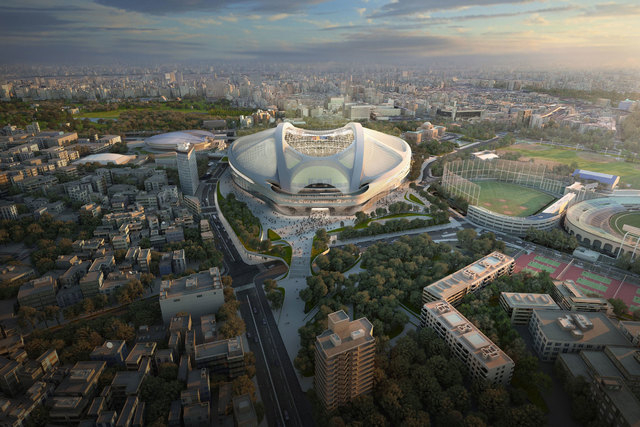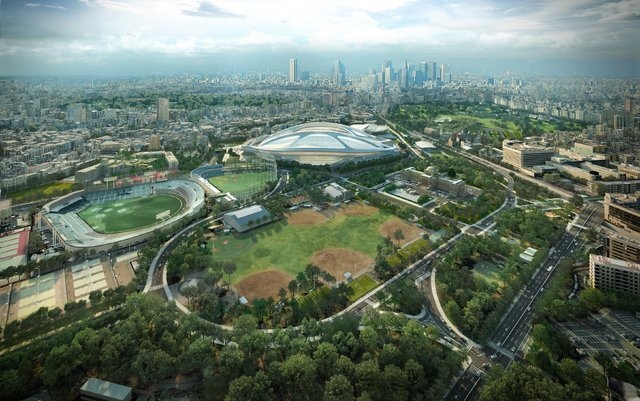Controversy surrounds Japan’s ‘bike helmet’ Olympic stadium


Japan appears set to proceed with a controversial design — likened by some critics to a giant bike helmet — for its centerpiece stadium for the 2020 Tokyo Olympics, despite heated objections to the project, an official said Wednesday.
Furthermore, the cost of the project is now predicted at 250 billion yen ($2.02 billion) — a huge rise from the 162 billion yen ($1.31 billion) proposed earlier.
Iraqi-British architect Zaha Hadid’s ultramodern design for the stadium, selected as the winner of an international competition, will be significantly larger and more expensive than its recent predecessors, and has faced scathing criticism since it was unveiled.
In an open letter to the government body in charge of the games last year, leading Japanese architect Arata Isozaki said the sight left him “in despair” and warned the stadium would be a “disgrace to future generations.”
The project has seen budget cuts, design revisions, demolition delays and serious cost blowouts since it was unveiled, as material and construction costs have soared.
Amid concerns over the design’s cost, sustainability and its suitability to its surrounds — in the outer gardens of Tokyo’s Meiji Shrine, on the site of the stadium used for the 1964 Olympics — rival groups have proposed alternatives to the Hadid design.
One group, led by Pritzker Prize-winning architect Fumihiko Maki, who designed the Tokyo gymnasium for the 1964 Olympics, favors altering Hadid’s design by removing two of its trademark arches running the length of the stadium. In this way, the group claimed it could reduce the cost of the stadium significantly.
“The biggest problem overall is the cost and the length of construction,” the group said in a statement.
Another group has advocated retrofitting the existing stadium for the 1964 Olympics — a solution advocated by Jeff Kingston, an Asian studies professor at Tokyo’s Temple University.
Kingston has been an outspoken critic of the stadium, which he described to CNN as a multibillion dollar “white elephant waiting to happen.”
“There are very few events that will require such a massive stadium, one that blights one of Tokyo’s greenbelts,” he said. “For a fraction of the cost they could have retrofitted the old stadium that requires far less maintenance than the new facility. So taxpayers will be handed a gift that keeps on taking.”
Further more, he said, the “glitzy and garish” design “tramples on Japanese aesthetics.”
“Hadid’s curse will be a burden for decades to come,” he said.
On Tuesday, Education Minister Hakubun Shimomura, whose ministry is overseeing the event, hinted that an alternative design could be considered if it could realistically be implemented ahead of the 2019 deadline. Japan plans to use the stadium when it hosts the Rugby World Cup that year.
But on Wednesday, Yukio Yamamoto, a spokesman for the ministry’s Sports and Youth Bureau, appeared to pour cold water on the idea.
“The ministry is planning to stay with Zaha’s plan as of now,” he said, as it was unlikely changes could be made and still make the deadline.
He said the original design had already undergone alterations to reduce costs — but the controversial arches would be retained, otherwise the design would no longer be Hadid’s.
Yamamoto said a final decision on the stadium had yet to be made, but one was likely by the start of July.












